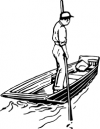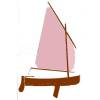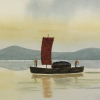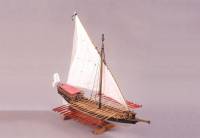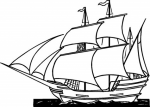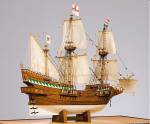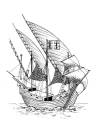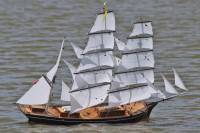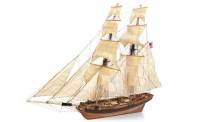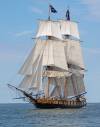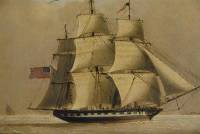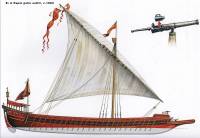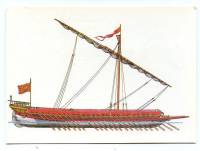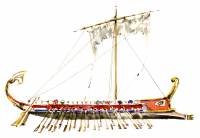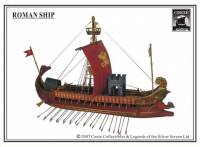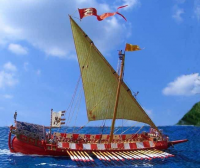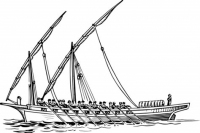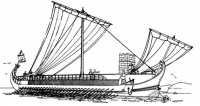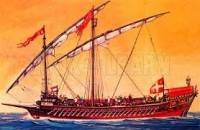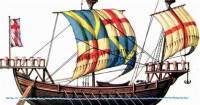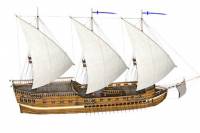Table of Contents
Ships and Boats
I have tried a few ways of doing this so far - this format is a work in process …
Basic Boats
These vessels all conform to the technical description of a Raft. Minor, descriptive, items might change slightly, but the numbers don't. You do not need any specialized boat building facilities to build any of these vessels. However, you will need appropriate craft or survival skills. These are the favoured vessels of many small wetland and river communities.
Click here for the Raft Technical Description
Small Boats
These vessels all conform to the technical description of a Rowing Boat. Minor, descriptive, items might change slightly, but the numbers don't. You do not need any specialized boat building facilities to build any of these vessels. However, you will need appropriate craft or survival skills. You find these vessels wherever there are harbours, jetties or even just beaches, and they are probably the most common waterborne vessels in the world. While they are called Rowboats, some are fitted with sails as well. Small boats cost 50gp, unless otherwise noted.
Click here for the Rowboat Technical Description
Large Boats
These vessels all conform to the technical description of a Ship's Boat. Minor, descriptive, items might change slightly, but the numbers don't. Large open boats used for transporting people and cargo across short distances. They can all cope with short trips into ocean waters, but are generally used coastal or inland waters. They are not, normally, used for long trips as there is no cabin space, but all can survive at sea, for quite a while, if they are required to. Large boats cost 500gp, unless otherwise noted.
Click here for the Ship's Boat Technical Description
Keelboats
These vessels all conform to the technical description of a Keelboat. Minor, descriptive, items might change slightly, but the numbers don't. Keelboats are the vessels of small scale merchants or successful fishermen, and all have specific adaptions that make them suitable for a particular role. They are much less effective when they are used for other roles. All keelboats are about 60 feet long and 15-20 feet wide. Keelboats cost 3000gp, unless otherwise noted.
Click here for the Keelboat Technical Description
Coasters
These vessels all conform to the technical description of a Coaster. Minor, descriptive, items might change slightly, but the numbers don't. Coasters are all, roughly, 70×20 feet and designed for shallow sea work. Most work as local traders, although some are used as fishing vessels. They are not particularly good for long voyages, and can only sail on the widest and deepest rivers. They are among the slowest of the seagoing vessels and cost 8000 gp, unless otherwise noted.
Sambuks are coasters from Sakhar.
Click here for the Coaster Technical Description
Longships
These vessels all conform to the technical description of a Longship. Minor, descriptive, items might change slightly, but the numbers don't. Longships are narrow, compared to other ships - and of simple construction. These open vessels are powered by oars and sail, and do not have cabins for the crew or spacious cargo holds. They are used by navies, pirates and raiders, they cost 10,000 gp, unless otherwise noted.
Click here for the Longship Technical Description
Sailing Ships
These vessels all conform to the technical description of a Sailing Ships. Minor, descriptive, items might change slightly, but the numbers don't. Built with a deep hull, sailing ships are designed for open water, and are favoured by many pirates, navies and merchants. However, they may run aground in shallow seas, and will only be found in the deepest river mouths. They cost 10,000 gp, unless otherwise noted.
Click here for the Sailing Ship Technical Description
Man-o-War - a Man-o-War is a large sailing ship, similar to those described above, which are commonly employed by Navies who want to conduct battles outside their own coastal waters. They normally built with four masts, and all the upgrades that can be built into a new ship. Then they are fitted with more upgrades, batteries of siege engines and a detachment of marines. Some Men-o-War carry over 100 marines. Frigates, Galleons and Xebecs are normally built as Men-o-War and are significantly more expensive than normal sailing ships.
Xebecs are Men-o-War from Sakhar.
Junks
These vessels all conform to the technical description of a Junk. Minor, descriptive, items might change slightly, but the numbers don't. Vessels in this class have a shallow draught, stacked stern and a single cargo deck. True junks need fewer crew becasus eiof their sail design, although others need larger crews to handle more complex sails.. They cost 15,000 gp, unless otherwise noted.
Click here for the Junk Technical Description
Warships
These vessels all conform to the technical description of a Warship. Minor, descriptive, items might change slightly, but the numbers don't. Warships are large vessels, equipped with both oars and a sail, that carry a large crew, many siege weapons and up to 100 marines. They do not travel well across open seas and are generally deployed in shallow waters, as part of a local navy. They cost 25,000 gp, unless otherwise noted.
That only real difference between different types of Warship are the cabin and sail arrangements, so I have added a few images to give you an idea of styles.
Click here for the Warship Technical Description
Galleys
These vessels all conform to the technical description of a Galley. Minor, descriptive, items might change slightly, but the numbers don't. Galleys are colossal vessels, equipped with both oars and a sail, that carry a large crew, up to 200 marines, many siege weapons, and are among the fastest vessels on the seas. They do not travel well across open seas and are generally deployed in shallow waters, as part of a local navy. Bigger than Warships, they cost 30,000 gp, unless otherwise noted.
That only real difference between different types of galley are the cabin, sail and oar arrangements, so I have added a few images to give you an idea of styles.
Click here for the Galley Technical Description





